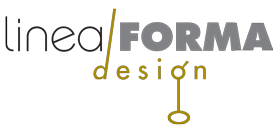It’s not surprising how often you see hands in advertising. They direct the eye, demonstrate usage and provide relatable context and scale to users/customers.

We’ve entered the post-reality world and I’ve now created digital hands for 3D renderings and animations. Animating digital hands really makes you appreciate the complexity of movement inherent in the human hand. Those opposing thumbs are genius!
Digital models can be used for presenting product features or for demonstrating how specific functional processes work as a useful alternative to using live models and film crews. Crossing the uncanny valley into the almost real but not quite human, when it’s clearly not trying to present itself as real, allows the viewer to suspend what’s real and just pay attention to the story being told.
Recent models I have made were to demonstrate people interacting with various testing products on a countertop in a laboratory. Each animation was extreme close-up cropped around the process and the human interaction. So the persons in the picture are only the parts needed for the scene, usually just hands up to the elbow, some with rubber gloves on, some “naked”, but all are clearly just one level less than photorealistic, yet highly accurate. One body I made is just a full torso with arms, minus head and legs. Whatever won’t be seen doesn’t get made, speeding up my rendering times.

Here are just a few of the advantages to digital models compared to “real” models:
• Digital models can move perfectly smooth at any speed, even super slow, and stop at an exact point in space.
• Digital models can hold perfectly still for as long as you want them to, in exactly that same point in space.
• At the end of the photo session, digital models, in fact the whole scene can be sent to a “digital warehouse” and be ready tomorrow, or next year, in exactly the same pose and spot as they were today.
• They are ALWAYS available, any day, any hour, virtually forever and they never complain or get tired.
• They can be updated, modified, changed to different colors/materials using the exact same pose and positions each time.
• Digital models can have any level of finish, details and realism as the project requires.
• Digital scenes leave out the visual clutter that the “real world” is full of.
• Digital models are magical beings, so they only need the body parts that show in the final scene, the less the better.
Linea Forma — Body Parts R Us! We’re always handy to have around.
Share this:

